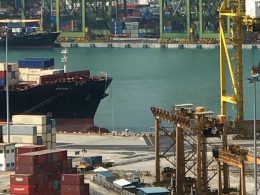by Kristina Hooper, Chief Global Strategist, Invesco Canada
Just days into the new year, Omicron continues to spread and the U.S. Federal Reserve has turned hawkish. So does this change our 2022 outlook? Not dramatically, but we offer a few notable updates.
At Invesco, constructing our annual outlook is an important endeavour. We begin the process in early September, bringing together some of our most experienced investment professionals and thought leaders, representing different regions and asset classes, to undergo a multi-step process.
We first develop gross domestic product projections and inflation projections based on a variety of inputs. We also factor in fiscal and monetary policy in various countries and regions to help form our view. We then determine where in the economic cycle we are, which informs our asset class preferences. To address the breadth of possibilities that lie ahead in the environment, we not only provide a base case scenario that we believe is highly probable, but we also provide two additional tail risk scenarios and contemplate the investment implications of each.
When we released the 2022 outlook in early December, we gave the caveat that we had formed these views largely prior to the emergence of the Omicron variant and the possibility of an accelerated taper timeline from the U.S. Federal Reserve (Fed). We recognized that there may be a need to revisit the outlook if we were to experience an event significant enough to potentially alter the macroeconomic landscape and investment implications. And so we recently reconvened to assess the impacts of the spread of the Omicron variant and the Fed’s hawkish pivot.
Has the outlook changed?
The result is that our outlook remains largely intact, with a few notable exceptions:
- We believe growth will be negatively impacted in the first quarter due to Omicron, but that it would then be made up for later in the year, likely as soon as the second quarter given how fast-moving Omicron is.
- We also believe more policy tightening is likely given the Fed’s hawkish pivot. However, we do not believe it will be so excessive as to end the economic cycle; rather, we continue to expect a measured deceleration in growth for the U.S. and other developed countries where fiscal and monetary stimulus is being removed. There is always the risk of a policy error, but it is not our base case.
- Also due to Omicron, we expect further supply chain stress as China pursues targeted lockdowns in line with its zero-COVID strategy. This may negatively impact Chinese growth, but not derail it. It’s also likely to exacerbate inflationary pressures, and so higher inflation may last slightly longer than the mid-year peak that we anticipated in our outlook.
- Omicron has also increased the possibility of the “persistent inflation” tail risk scenario we shared when we released the outlook, given its potential to exacerbate inflation. However, it is not our base case scenario.
Does this impact our asset class view?
The two asset preferences in our base case scenario that we thought might be altered by the Omicron spread and a more hawkish Fed were emerging markets and longer duration. However, we continue to support both of those preferences:
- Emerging markets. Given that our growth expectations for 2022 have only been slightly altered by Omicron, we continue to favour this asset class. Our view is that the re-acceleration in growth for emerging markets could be slightly delayed due to Omicron, but it could actually be more robust as a result of the immunization benefits Omicron could bring. We continue to believe the U.S. dollar will be relatively neutral, which also supports our preference for emerging markets. I also provide the caveat that many idiosyncratic factors drove the performance of EM in 2021 and may well continue to do so in 2022. We will follow up with more specific views on different areas within emerging markets.
- Longer duration. In the outlook, we shared our expectation for long rates to remain stable or somewhat down. After robust debate, we re-affirm that view. We expect ongoing pressure for rates to rise in short and intermediate maturities, but we anticipate rates to remain anchored or possibly even lower in the long end, which would likely favour duration. Our rationale for this view is that the overall growth outlook is largely unchanged, besides a shift in growth contributions between the first quarter and the second quarter. We recognize there is the potential for an alternate scenario in which rates rise on the long end, a view held by the Invesco Fixed Income team, which would cause us to change our view on duration. And so we do provide the caveat that our views may change when we re-convene to deliberate on our mid-year outlook. If we determine there could be a re-acceleration in growth (as we saw in 2005 and 2010), our view on the direction of rates, and therefore our view on duration, would likely change.
Conclusion
Even with the impacts of the Omicron variant, our key hypothesis remains: We expect a convergence of returns across asset classes as economic growth approaches trend growth rates. As we wrote in December, we view 2022 as a year of transition.
This post was first published at the official blog of Invesco Canada.
















